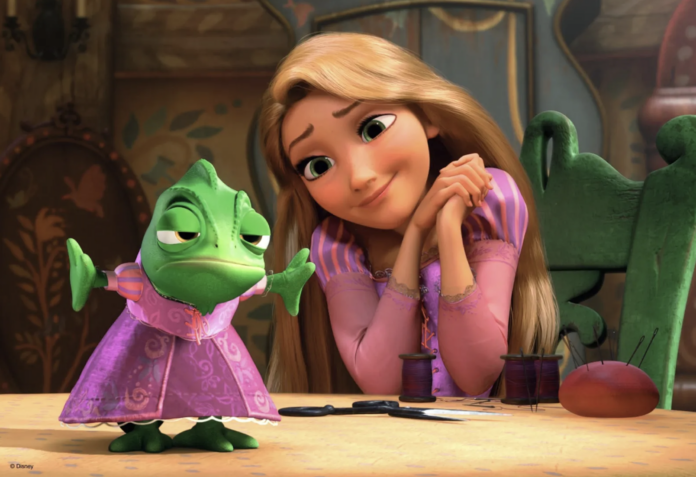Recent casting rumors spark conversation over the popular children’s story
By LORENA ALVAREZ — arts@theaggie.org
Disney holds a track record as one of the leading brands worldwide, but that does not shield the company from backlash. While they are known for their children-oriented animations, their live-action remakes appeal to their older audience. This childhood nostalgia can often lead to an uproar over casting decisions.
While Disney has yet to confirm plans for a live-action “Tangled,” let alone casting decisions, the rumors of a remake have been met with criticism, with some fans voicing their (dis)approval of the fan-casting of Avantika Vandanapu as Rapunzel. In light of the recent controversy, the following is a commentary discussing the meaning behind the Grimm brothers’ original tale and Disney’s “Tangled.”
Although Disney fans picture Rapunzel as a young girl with long golden locks, Rapunzel’s hair and race are not key factors in the overarching message of the story. The original version does not even emphasize her hair color, only mentioning it once in passing. Here, what is of importance is the fairytale’s cautionary tale.
Grimm’s 1812 “Children and Household Tales” version follows a couple who is punished for trespassing into the garden of Frau Gothel, a powerful sorceress. The text warns of the dangers of greed and temptation as a man steals in response to his wife’s “longing” for an edible purple wildflower “belonging to a sorceress who possessed great power and was feared by everyone.”
The acknowledgment that people were not welcome to take from the sorceress’ garden suggests that the couple, although driven by great desire, are in the wrong as they deliberately go behind the sorceress’ back to steal from her.
When the sorceress catches the man trespassing for the second time, she is angered that the man steals from her rather than asking if she could spare some rampion for his pregnant wife.
“How dare you climb over into my garden like a thief, and steal my rampion! It shall be the worse for you!” Gothel said in the story.
The message encouraging people to be truthful as well as grateful is further emphasized at the end of the tale, where Gothel cuts Rapunzel’s beautiful locks after discovering that her “daughter” has also betrayed her.
“I thought I had hidden thee from all the world, and thou hast betrayed me!” Gothel said.
As the story concludes with Rapunzel reuniting with the king’s son after living “in great woe and misery” as their punishment, the household tale warns children against disobeying their guardians and giving into temptation.
While Grimm’s version teaches children to be loyal and ask before taking things from people, Disney’s adaptation is a modernized take exploring the good that can come from taking risks and believing in oneself.
“Tangled” follows Rapunzel as she takes agency over her life that has been stolen from her by Mother Gothel and helps Flynn Rider, a thief, redeem himself by helping her leave the tower. For those unfamiliar with the story, Rapunzel dreams of leaving the tower in hopes of seeing the yearly lanterns that cover the sky on her birthday.
The iconic song “When Will My Life Begin? (Reprise 2)” depicts Rapunzel’s struggle to overcome her fears and explore the scary world that she believes Gothel has been protecting her from.
“Look at the world so close and I’m halfway to it,” Rapunzel sings. “Look at it all, so big, do I even dare? Look at me, there at last, I just have to do it […] here I go.”
The animation pairs these lyrics with a scene of Rapunzel cautiously pausing before stepping on the grass, and leaving her tower’s safety (and isolation). Through this, the scene highlights the fear and anxiety she must overcome to make her dream of leaving the tower a reality.
As she demands that Rider take her to see the lights, the script stresses the importance of taking an active role in the direction of one’s own life.
“You will act as my guide, take me to these lanterns, and return me home safely,” Rapunzel said. “Then, and only then, will I return your satchel to you.”.
Thus, classics like Rapunzel’s story play an important role in teaching young impressionable people valuable life lessons — both Grimm’s and Disney’s versions warn against theft, but the latter’s version adapts the story to encourage agency and bravery. While there is a lot of controversy over whether adaptations are better than the originals, taking a popular story and adapting it to meet modern audiences can oftentimes do more good than harm.
Written by: Lorena Alvarez — arts@theaggie.org





